|
https://ift.tt/2MZPmJZ
How to Develop Superfans Who Gladly Evangelize for You https://ift.tt/31pL3eI Do you want to create superfans for your business? Wondering how to develop the kind of connected community that elevated your brand? To explore how to develop superfans who will gladly evangelize anything for you and your business, I interview Pat Flynn. Pat is an active keynote speaker and host of the popular Smart Passive Income podcast. He’s the author of Will It Fly? and his latest book is Superfans: The Easy Way to Stand Out, Grow Your Tribe, and Build a Successful Business. Pat shares why your business needs superfans. You’ll also learn to recognize a superfan, develop a model to transform casual fans into active superfans for your brand, and more. Read a summary of the interview below. To listen to the interview, scroll to the end of this article.
Why You Need SuperfansIt’s getting harder to reach the people who say they want to hear from us through the social media channels and email lists on which we’ve built our businesses. For instance, Pat has a YouTube channel that has amassed a large following, yet the algorithms interfere with his subscribers seeing all of his content. Your superfans will go out of their way to make sure they have you in their life. When it comes to running a business in the ever-changing environment of social media and technology, our superfans will always be there. They become our insurance policy. We can rely on our superfans because they can rely on us and we need them more than ever. The beauty of nurturing relationships with your superfans is it’s more fun. While search engine optimization, marketing strategies, advertising, and drawing new customers are essential, the most important aspect of your business is the magical moments and experience you create once people find you. Rather than paying for ads on Facebook and Google, invest in developing superfans. All it takes is a little bit of time and care, and the return can be exponential. Not only will you have repeat customers and amazing testimonials, but your superfans will also evangelize and be ambassadors for your brand. In addition to continuing to be your customers over time, they attract new people to your business with the most authentic and incredible energy. This more than anything else can grow your customer base without any extra advertising or effort on your part. How to Deliver Better Results With Your Facebook Ads—Online Training! The Backstory Behind Superfans
The truth is, it doesn’t happen overnight. A person doesn’t listen to a song and become a fan of that musician or band at that moment. It takes a lot of care and love for that person over time to reach that level of loyalty. In 2014, Pat began speaking about this topic on stage. It made such a huge impact on people that he continued to be invited to speak about it at events all over the world, including Social Media Marketing World 2018. Following one of these events, Jay Baer approached Pat and said, “The world needs to hear this. If you do it [for] 200 people, 500 people, 1,000 people at a time on stage, it’s not going to have an impact like if you were to write a book. I really recommend you write a book about this.” So Pat did, giving big thanks to Jay Baer for encouraging him to do it. Superfans will be available as a book and an audiobook in August 2019. What’s cool about the audio version is that Pat reads his own audiobooks and tends to go off script a little, too. As a podcaster at heart, reading his book aloud is one of his favorite fun things to do. What Is a Superfan?Pat draws his definition of a superfan from Kevin Kelly’s article, 1,000 True Fans. Pat also credits this piece for being pivotal in his journey as an entrepreneur and business owner. A superfan is a true fan who is so in love with you and whatever you do—whether it’s artistic and creative, a service, a brand, or a product—that they’ll go out of their way to make sure that you not only continue to be there but that everybody else knows about you, too.
Compare this to being a musician and having people who love your work so much that they buy your albums, have your posters on their walls, and are willing to drive 8 or 10 hours to see you in person. Then they’ll wait afterward in the hopes of seeing you come out of the back of the venue and take a photo with them. That’s a superfan! Examples of SuperfansIn the business world, this is somebody who knows your products better and more in-depth than some of your own employees probably do. They’re the ones who are willing to stand in line and camp overnight for the latest version of your product the moment it comes out. You see this in the Apple world, but there are a lot of other kinds of products that have people camping outside the store when a new version is set to release. The superfans of most companies make up a smaller percentage of the overall user base and engagement level. Kevin Kelly cited a thousand true fans in his article, but for some businesses, this audience might be as small as hundreds or a few dozen. You don’t need a lot of people to have an amazing foundation for the experiences that people can have with your brand. Regardless of what industry or line of work you’re in, building for these kinds of audiences and offering this experience as a byproduct means that people who aren’t your super, super, superfans are still going to be ambassadors for your brand. They’ll still say nice things and encourage others to check you out.
Any Brand or Business Can Have SuperfansPat relates a story about his first fan from his first business in architecture. He built a website and wrote an eBook to help people pass an architectural exam. He describes the content as being very dry and hardly the type of thing that one would think could earn fans, but it did. A woman named Jackie reached out by email and thanked Pat for helping her finally pass the exam after over a year. She ended the message by saying, “Pat, I’m a huge fan. Thank you.” We’re usually fans of athletes, rock stars, or actors, but not people whose website helped you pass exams so this comment was surprising to Pat. A few months later, Pat noticed that his customer list contained 25–30 new customers from the same company that Jackie worked for. He learned that she convinced every person in her firm, including her boss, to individually buy Pat’s study guide that she had used. Even though she could have easily passed along the eBook for free, it was important to her as a superfan that Pat was paid in return for the good experience she’d had with his product. How to Know Someone Is a SuperfanYou get a general sense for your audience over time, especially as you see and engage with the same people over and over again. You’ll know you have a superfan when you start to see customers engaging with you on a much higher level more often. The hard part is this experience isn’t necessarily measurable. If you offer a suite of products, you’ll often see people start to spend more money with you or buy everything you produce. While this is certainly a good indicator that someone is at a higher level than most of your casual audience, there’s no dollar amount that needs to be spent before they become a superfan. A superfan may never actually spend any money with you but can still make a lot of money for you through their evangelism and support. There are many valuable ways beyond ROI or sales in which superfan can show up for your business.
Pat has superfans who step up whenever a hater or troll tries to say something negative about his brand. They’re on the front lines defending him before he’s even aware those trolls exist. Model for Creating SuperfansPat calls his model for creating superfans the Pyramid of Fandom. It’s a hierarchy that divides everyone who has ever encountered your brand into four distinct levels: Casual, Active, Connected Community, and Superfans. Each level is based on the level of engagement with your brand. Growing a Casual Audience Into an Active AudienceYour Casual audience is the biggest level at the base of the pyramid. It represents more than half of your user base and the part most marketers are spending money to grow. Your Casual audience is finding you through ads, search engine optimization, links from other sites, or a social media mention. They don’t know who you are yet, but for whatever reason, they’re interested in what you have to say. Perhaps it’s an answer that you gave on a blog post or something you mentioned in a podcast episode. But there’s nothing outside of this specific content that triggers them to consider you or your brand during their day. The goal is to convert people from being a Casual audience member to an Active audience member or subscriber, at the next level above. This part is made up of probably 30% of your total audience. These people have taken some sort of action indicating that they like your products or what you have to say. They’re going to start actively paying attention to you now, but aren’t willing to put forth the extra time and care to be a part of any sort of community around you. This includes your email subscribers, social media fans and followers, and possibly customers. Creating a Connected CommunityThe next level is your Connected Community, which accounts for 15%–20% of your audience. This is where the magic starts to happen. People are talking to you in the space and they’ve also started to talk to each other and feel a sense of belonging and purpose. They begin to form an identity around this community in the way that fans of Star Trek are known as Trekkies and fans of Taylor Swift are known as Swifties. Human beings naturally want to be with other people who get them. Incredible things happen when you, as the leader of a brand, can build these group opportunities and community connections. They not only love the person, movie, or show, they love that they’ve found one another, which elevates the brand even further. Ascending to Superfan StatusThe smallest section at the top of the pyramid represents the Superfans, who make up maybe 5% or less of your entire fan base. However, if you were to examine where your highest engagement, best repeat customers, and people spending the most time and money with you are coming from, it would be at this level. Yet brands tend to spend most of their time, money, and effort on growing the pyramid from the bottom up. Flip the pyramid upside down and it now looks like a traditional marketing funnel. While funnels are valuable tools that automate the process of turning subscribers into customers, marketers expect it to work like a real-life funnel where you pour water in the top and gravity does the work. This is the big juxtaposition between traditional marketing models and what Pat is trying to establish and teach to people. The process of creating superfans isn’t a funnel. It’s a pyramid and gravity is working against you. It takes extra work, time, and care to create the kind of moments that bring people in and elevate them to where all the activity is happening. The Pyramid of Fandom model is where businesses are going, as seen with the growing privatization of social media. It also shows exactly where businesses should now focus their attention. Speeding Up the Superfan ProcessWhile the process of moving people up the Pyramid of Fandom takes time and care, it can be sped up depending on your business model and the moments you create for people. Even then, each step can take its own time.
Sometimes there’s an emotional connection that makes people quick to fall in love with your work. Pat illustrates this point with his love for the movie Back to the Future as an example. While there are many cool things about the movie, it was the very personal connection to his life at the time that sped up the superfan process for him. Meanwhile, it’s taken some people years of following Pat on Smart Passive Income before they jumped to the level of superfan status. It might be within 15 minutes of discovering your brand that you win someone over and convert them from being a casual audience member to an active audience member. It may require a couple of weeks to then convert them to become part of your community. A lot of action can happen at the bottom of the pyramid and it can happen fast. It’s harder to move people up. Tips for Moving People Up the Pyramid of FandomPat shares some different strategies in the book for triggering people to go from being a casual audience member to an active audience member and beyond. Understand the Lyrics That Get Your Audience to RespondThe lyrics are simply the words you say that reach your audience at the right time and place. You might have the best solution or product in the world, but you might as well not have a product at all unless you can speak the language that resonates with your audience. There’s so much importance in what you say and the language you use to say it. Pat references marketing expert Jay Abraham, who states that if you can define the problem better than your target customer, they’ll automatically assume you have the solution and you won’t have to sell very hard. Choose the words that are already coming to their minds and they’ll think you’re the person they’ve been looking for all along. Pat shares a story in the book about how his wife became such a huge Backstreet Boys fan as a teenager in the late ’90s. He tells us about the first moment she was triggered by their popular song, “Quit Playing Games With My Heart.” She had heard it many times before on the radio but didn’t actually pay attention to it until she happened to encounter it at a moment of being down in the dumps over a breakup. 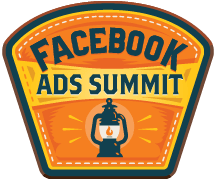
Get Facebook Ads Training—Online!The Facebook Ads Summit is ideal for any marketer who wants to better understand the latest Facebook ads strategies and improve their testing and analysis. The world’s top Facebook ads experts show you their proven techniques. The Facebook Ads Summit is a live online training event from your friends at Social Media Examiner. CLICK HERE TO LEARN MOREShe remembered this particular moment because every single word in that song reflected exactly what she was going through in her life at that time. She couldn’t believe how much this group, who couldn’t possibly know who she was, seemed to understand everything about her and her situation. That was her activation moment and the beginning of her true fandom. She immediately went out and bought the album. Then a few months later, she went to a concert. Then several years later, Pat joked about discovering there’s a box in their closet with bobbleheads and framed pictures of the Backstreet Boys. At the time this was all happening, the Backstreet Boys’ target market were girls between 13 and 18. What happens to girls this age is that they fall in love and they fall out of love. When you’re aiming to write a song for teenagers, you would, of course, use the same language they would. An adult or a little kid would never say, “Hey, babe, quit playing games with my heart,” but teenagers would. The Backstreet Boys using this lyric in their song made it a number-one bestseller and top of the Billboard charts. Using the right words can mean so much. Have Conversations With PeopleThe best way to understand your target audience is to have conversations with them. Keep track, listen closely, and pay attention to how they say what they say when you ask questions like, “What are your biggest struggles right now?” and “What’s your number-one biggest challenge related to ______?” After that, all you have to do is regurgitate that same language back to them and you’ll resonate with them.
This is precisely how Pat sourced the title of his first book, Will It Fly? How to Test Your Next Business Idea So You Don’t Waste Your Time and Money. He came up with the first part, Will It Fly, but the subtitle is from conversations with his audience about their biggest fears—wasting time and money. Directly addressing these fears in the subtitle assured people that this book was for them and led to it becoming a Wall Street Journal bestseller. Offer a Small, Quick WinIf you’ve ever played a video game, you know that they do this very well. Level one is always the easiest and allows you to quickly level up with new abilities you’ve earned with coins, flashing colors, and nice noises. Next thing you know, you’re hooked on the game and can’t stop playing. Any business can offer the same thing to their potential customers, too. Pat shares how Ramit Sethi, the New York Times bestselling author of I Will Teach You To Be Rich and founder of a blog of the same name, uses this technique. Many years ago, Pat came across one of his articles titled something like, “Call Your Cable Company, Save 25% in 15 Minutes Using This Script.” Pat was skeptical but called his cable company over a lunch break anyway and managed to save 25% a month on his bill and hundreds of dollars over time by using Ramit’s script. While others in the personal finance space talk about long-term savings and long-term rewards, this simple but immediate and effective win led Pat to dive into all of Ramit’s content. Consider where people enter into your brand and then how quickly you can get them to a win. Everything happens fast now. The quicker you deliver a win, the quicker you’re going to trigger a person to stop moving and start paying attention to you.
Look beyond big sales and transactions and examine the ways you can change the lives of your audience and customers. If you want to change somebody’s life, start by changing their day first. Start small and get people to come back for more. Then you can get them to go bigger, take more action, and move up to being an active subscriber and eventually part of your connected community. Pat suggests studying more about this strategy in Charles Duhigg’s The Power of Habit. This book has an entire chapter devoted to small, quick wins and their psychological rewards. Listen to the show to learn how quickly Pat went from being uninterested in Ramit’s blog to being a big fan. Get People Involved With Your BrandBringing someone into a community doesn’t mean they’re going to participate. While other brands remain secretive and closed off to customers’ suggestions, it adds so much to get people involved and make them feel like they’re part of something bigger. If you can get people involved, you can get them to invest. There are a lot of little things that brands can do to get people from an active audience member to feeling like they’re a part of the community. One of Pat’s favorite things to do is to open up his business a little bit, and even allow your people to get involved with where your brand is going. Even the slightest bit of participation and ability to be heard goes a very long way with audiences. To visualize this, online marketing expert Amy Porterfield once asked her Facebook page followers and fans to vote on a graphic for her email newsletter. Amy, one of the smartest marketers Pat knows, probably doesn’t actually need help from her audience, but getting people involved and voting on the direction of her brand makes them feel like they’re a part of a decision. It also makes them interested in the outcome. Pat draws on another example in an early 2013 podcast interview I did with Steve Spangler in which he shares how he uses YouTube to build his brand and business. Pat describes how Steve increased engagement on his science experiment videos simply by allowing the audience to reveal the secret chemical or share what they think happened in the comments rather than telling them. This relatively tiny shift caused such a major bump to his channel that it caught YouTube’s attention. Listen to the show to hear Pat share how companies like LEGO use crowdsourcing to drive product development and help direct where the brand is going. Make It Possible for Your Community to Meet One AnotherThe magic of community is when members begin to meet each other. This can be done online or offline by creating little gigs or events or meetups where people can find each other. Often when Pat speaks at an event, he’ll rent a space in a restaurant or somewhere else where his fans and his audience can come together and chat. It’s casual and simple, but the key is that everyone gets to meet one other. At one of these events, there was a person Pat had forgotten to greet. Feeling bad, Pat approached her to apologize and offer a chance to talk later at the event. She explained that although she was a huge fan of his, she didn’t come to see him. She came to meet people who are exactly like her and she was thrilled that this event finally allowed her to do that. This shows the power of bringing a community together. Not only does it give your audience an opportunity to get to know you and for you to get to know them, but it also allows them to talk to one another. This elevates your brand, too. Brands and companies can encourage and develop the same kind of following. For instance, LEGO has hundreds or thousands of AFOL meetups all over the world. AFOL stands for “Adult Fan of LEGO” and these individuals get together to hang out, build things, and host competitions. LEGO has even recruited some to join their team because they’re artists and talented with their builds. It creates a strong connection to one another and helps the brand grow.
Listen to the show to hear about powerful, long-standing connections I’ve made at past community events and dinners planned by Pat and others. Take Time to Give Personal Care and Attention to CustomersOnce you’ve established a strong, connected community for your brand, there are a few more things you can do to nudge people into becoming superfans. One of Pat’s favorite things to do is create and send a quick personal video through Instagram Direct, Twitter Direct Message, Facebook Messenger, or any other tool that allows you to have a personal conversation with an individual. While this method isn’t 100% scalable, it 100% works because it’s unexpected and exceeds expectations. Everybody expects to get a thank-you email after a purchase, but a thank-you video blows people away. It also helps them realize that they’ve spent their money in the right place and that there’s an actual person that they can connect with on the other end of their transaction. Humans want to connect with other humans. The other key to this strategy is that nobody’s doing this, even though we all have the ability and technology to do so. It’s a trigger that makes you stand out among your competitors. Additionally, there are even tools such as Bonjoro (free version available) and BombBomb (starting at $468/year) that can help with the automation and scalability. With Bonjoro, Pat gets a notification on his phone whenever someone purchases one of his products. When he swipes, it launches a recording video screen on his phone that he can easily record an 8-second video in which he says, “Hello, John. Thank you for purchasing my podcasting course today. I appreciate you so much. If you have any questions, let me know.” This video alone generates a 75% reply rate and people can’t believe he would take the time to add this personal touch and extra care.
In the book, Pat offers many different examples of ways that you can create these experiences online and offline. They don’t have to be expensive, elaborate, or time-consuming. They simply must be magical moments that show you care. These are the little experiences that people share and make your customers recommend you. Listen to the show to hear some of the ways we exceed customer expectations at Social Media Marketing World and in the Social Media Marketing Society. Maintain Your Superfans and Make Them ShineA superfan can come to expect a certain level of service, quality, or attention from the brand, and then lose interest once things change. There’s a chapter at the end of Pat’s book, “Make Them Shine,” that’s related to keeping your fans. It involves featuring your community members who represent a much larger whole of your audience to the public. While it’s a one-on-one situation in terms of who you feature, this person is someone with whom others can relate and see themselves, in either who they were or who they want to be. This can inspire other people to take action with your brand. Discovery of the WeekRecordScreen.io is a cool free tool to record your screen and your camera at the same time. There’s no software or app to download, nor account needed to access this tool. It’s all web-based and works right from the browser.
Hit the Record button. Then select either Screen + Cam or Screen Only. The site will ask for permission to access your camera and microphone if you want to record yourself speaking. You can specify which screen, browser window, or specific tab within a browser you’d like to pull into your recording and position where you’d like the recording to focus. After that, hit Start Recording and it’s recording. Press Stop when you’re done and download the video to your computer. You can find RecordScreen.io on Chrome and Firefox. It currently doesn’t appear to work well on Safari. Listen to the show to hear more about RecordScreen.io. Key Takeaways From This Episode:Listen to the Interview NowThe Social Media Marketing podcast is designed to help busy marketers, business owners, and creators discover what works with social media marketing. Where to subscribe: iTunes/Apple Podcast| Android| Google Podcasts| Google Play| Stitcher| TuneIn| Spotify| RSSWhat do you think? What are your thoughts on these tips for creating superfans? Please share your comments below. Get your 2020 tickets! There are 17 tracks of content available from the world's top marketing pros! Social Media via Social Media Marketing | Social Media Examiner https://ift.tt/1LtH18p August 9, 2019 at 05:30AM
0 Comments
Leave a Reply. |
�
Amazing WeightLossCategories
All
Archives
November 2020
|


 Pat has always been interested in creating and nurturing superfans and has had an amazing fan base for a very long time. Over time, others have been curious how he got to the point where he merely tweets that he’ll be at a restaurant and 20 or 30 people show up to meet him and one another. Or how he’s had repeat customers who will buy any of his products, even without reading the sales page.
Pat has always been interested in creating and nurturing superfans and has had an amazing fan base for a very long time. Over time, others have been curious how he got to the point where he merely tweets that he’ll be at a restaurant and 20 or 30 people show up to meet him and one another. Or how he’s had repeat customers who will buy any of his products, even without reading the sales page.
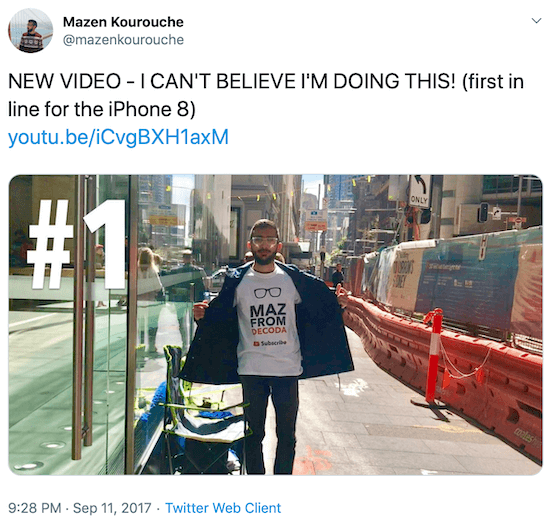


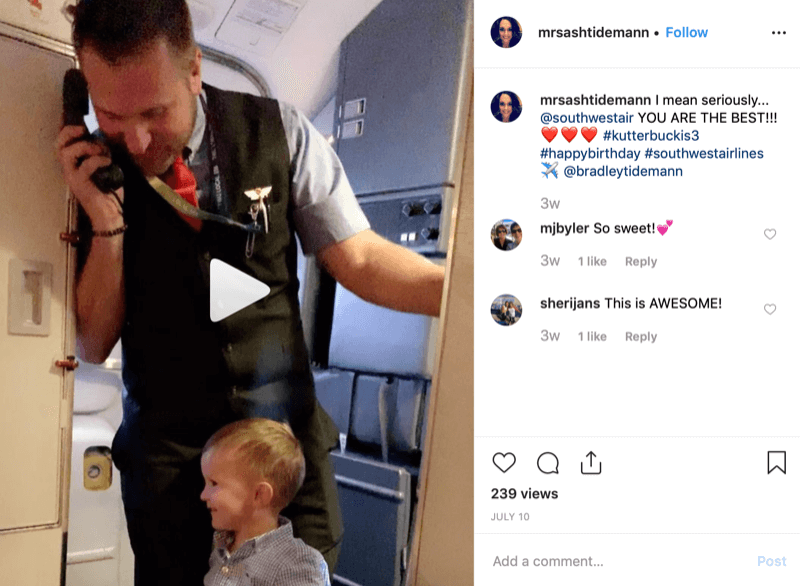



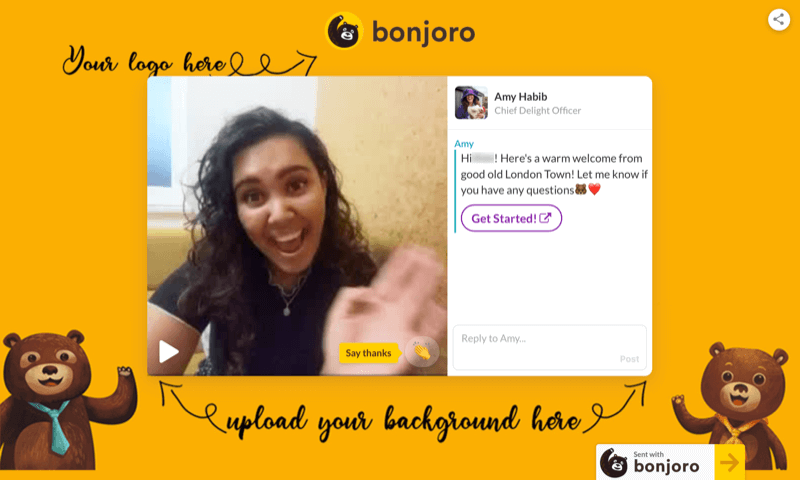
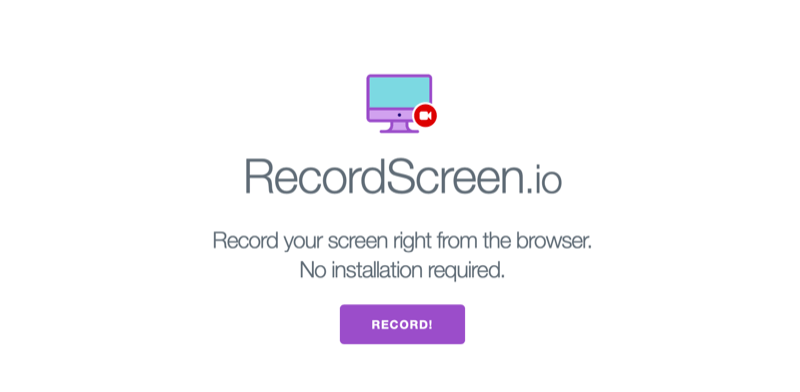

 RSS Feed
RSS Feed
